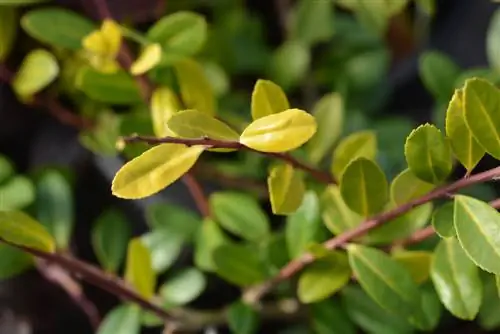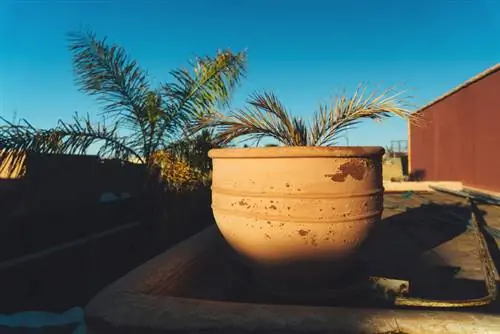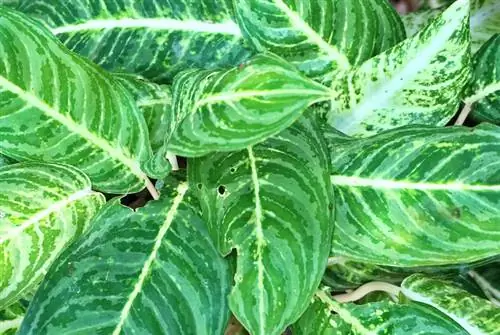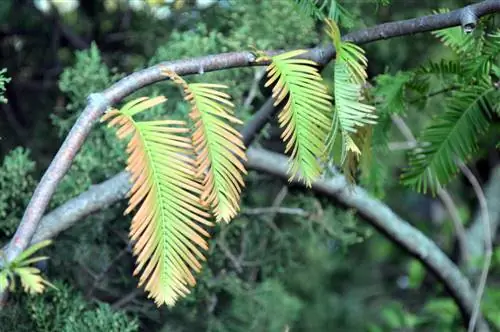- Author admin [email protected].
- Public 2023-12-16 16:46.
- Last modified 2025-01-23 11:21.
It is not for nothing that the Japanese holly Ilex crenata has almost overtaken the boxwood as a hedge plant. Illnesses are extremely rare and almost always due to care errors. Ilex crenata is very easy to care for.
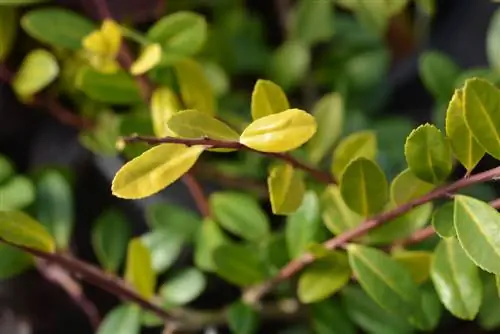
What diseases can affect Ilex crenata?
Illnesses in Ilex crenata are rare and often due to care errors. Possible diseases include fungal infection on the roots or chlorosis, which leads to whitening of the leaves. Pests such as spider mites can also appear. Prevention and biological control agents are recommended.
The robust Ilex crenata rarely suffers from diseases
Ilex crenata is an evergreen, very robust plant. In a good location it hardly needs any care. Diseases only occur very rarely, and then it is usually due to a location that is too damp or windy.
If the plants are weakened, they are more likely to suffer from diseases or pest infestations. In this case, fertilize twice a year with organic fertilizer.
What diseases occur?
Soil fungi cause the roots of Ilex crenata to rot. You can recognize a fungal disease by a foul smell emanating from the Ilex. Then look at the roots. If the root tips are dead and the root shows a white coating, it is a fungal infection.
Sometimes the plant can be saved by cutting the roots and moving it to another location.
If the leaves bleach, the gardener speaks of chlorosis. This disease is triggered either by a location that is too dark or a pH value in the soil that is too high. If necessary, have the soil examined in the laboratory.
Watch out for pests
Only a few pests bother the Ilex crenata. This includes the spider mite, which occurs in very dry climates. It shows itself as small dots on the leaves, young leaves wither and fall off. The spider mite sucks on the underside of the leaf and damages it.
Take appropriate action. It is better to avoid chemical agents. Natural enemies are much less dangerous and more effective. Therefore, rely on the following biological control agents:
- Ladybug
- lacewings
- Predator bugs
- ground beetles
As a preventative measure, in very dry times you should moisten the leaves of the Ilex crenata with water, especially on the undersides.
The leaves of Ilex crenata turn yellow
When the leaves of Ilex crenata turn yellow, it almost always indicates too much moisture. If possible, make sure that the soil is well-drained before planting so that no waterlogging can form. Water regularly but only so that the soil is always slightly moist.
Watering is also important in autumn and winter. Problems often arise here because the plants are too dry.
The longer the Japanese holly stays in the same place, the less you have to worry about watering it. Older specimens take care of themselves via their deep roots.
Tip
The berries of Ilex crenata are poisonous. Therefore, if you have children or pets, you should plant the Ilex crenata Dark Green variety. This is a male species that does not produce berries.

